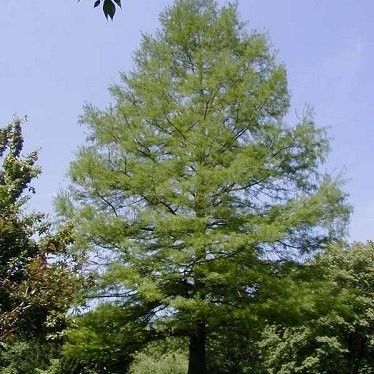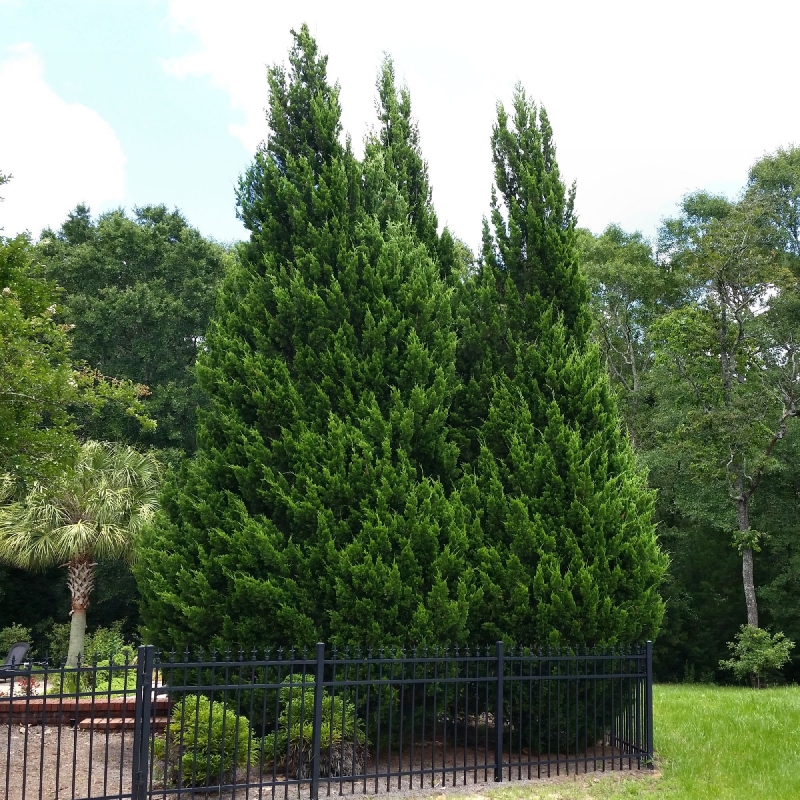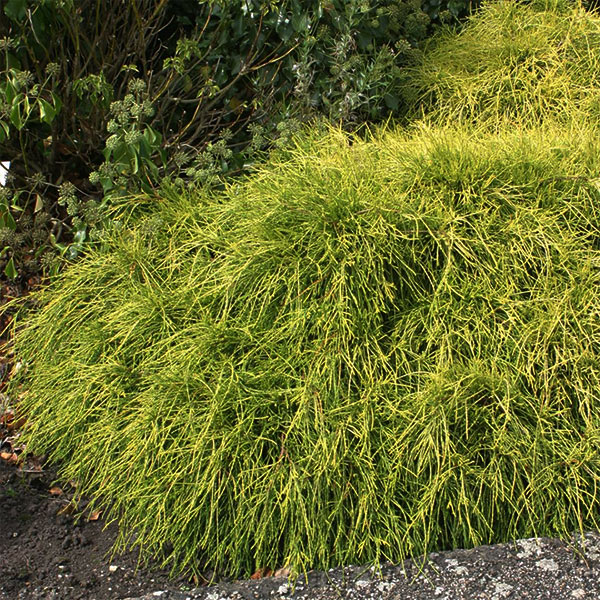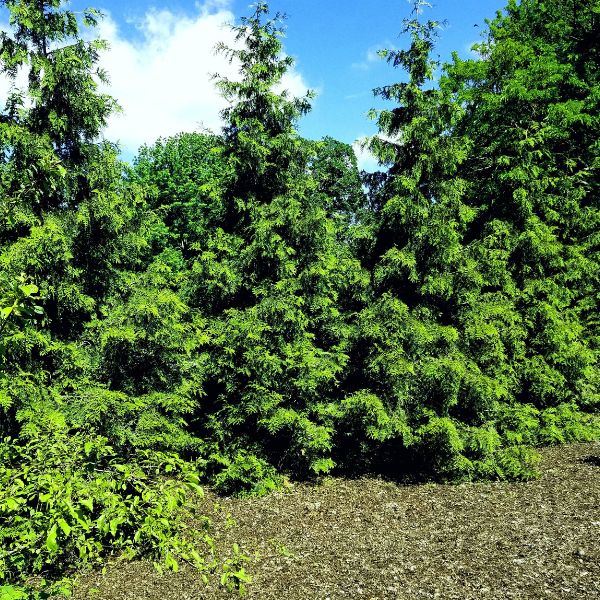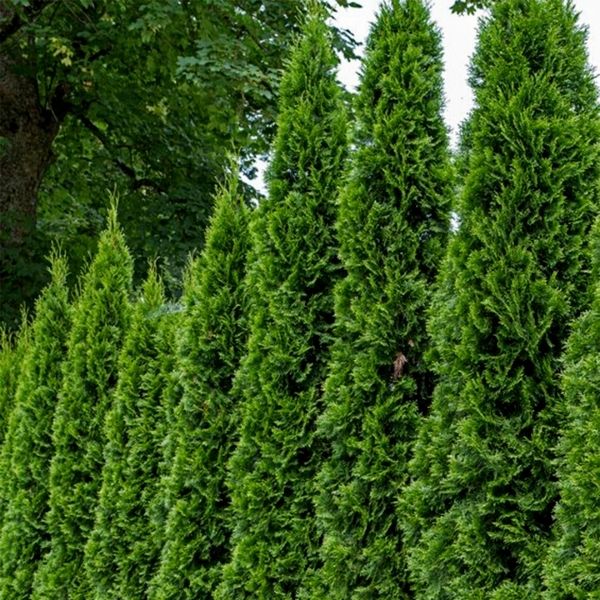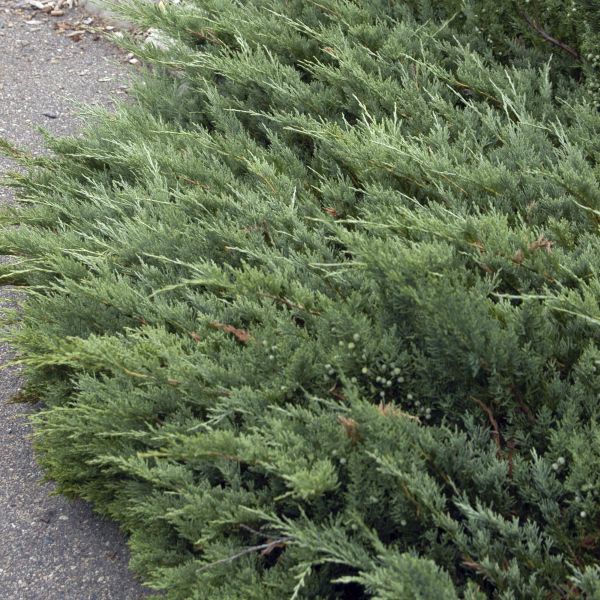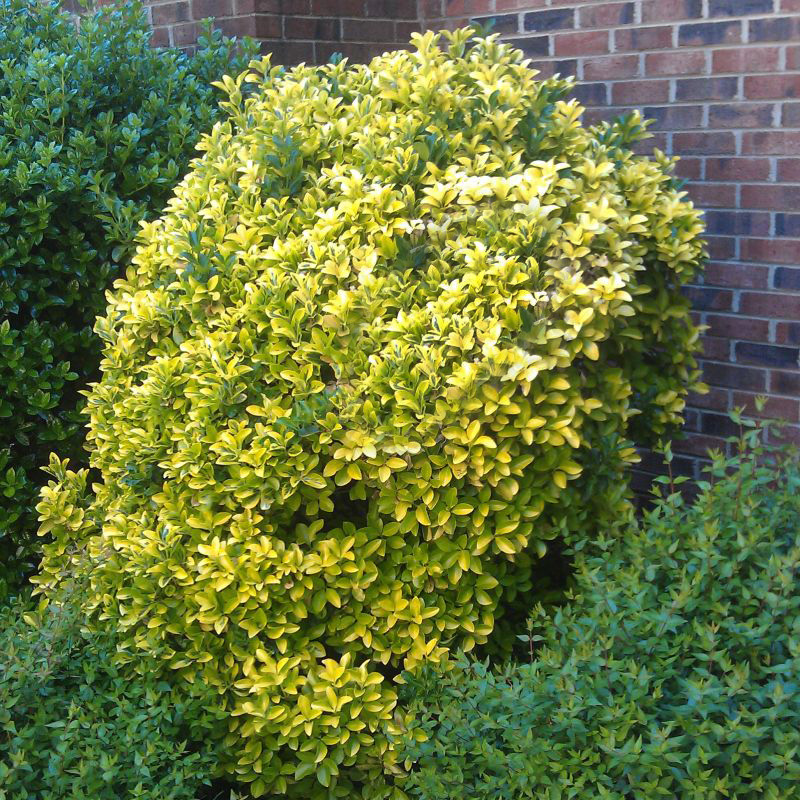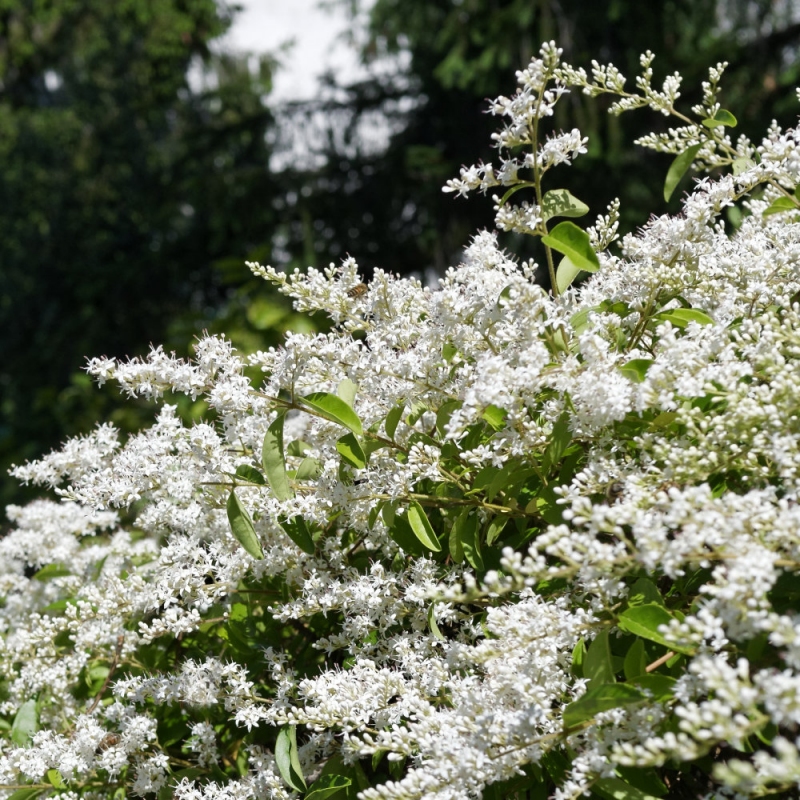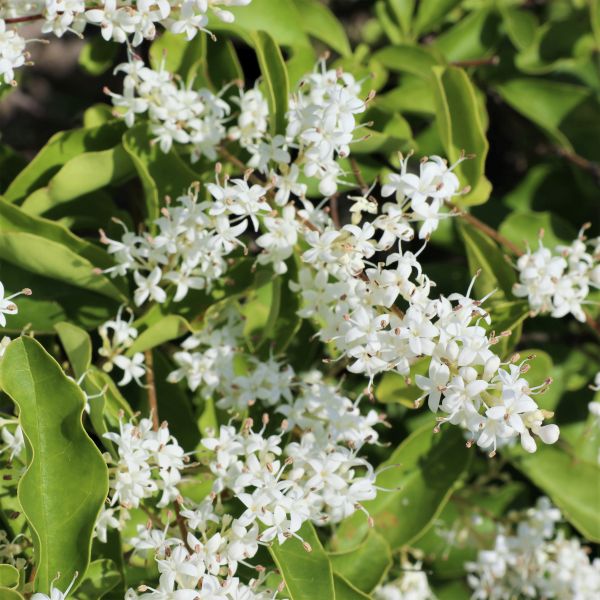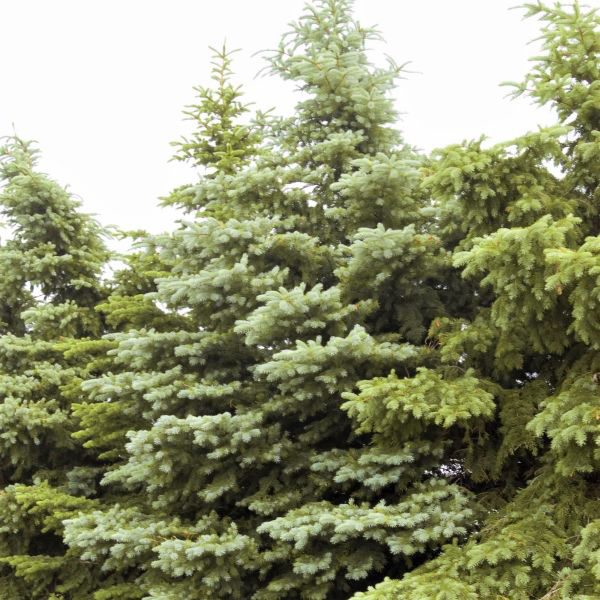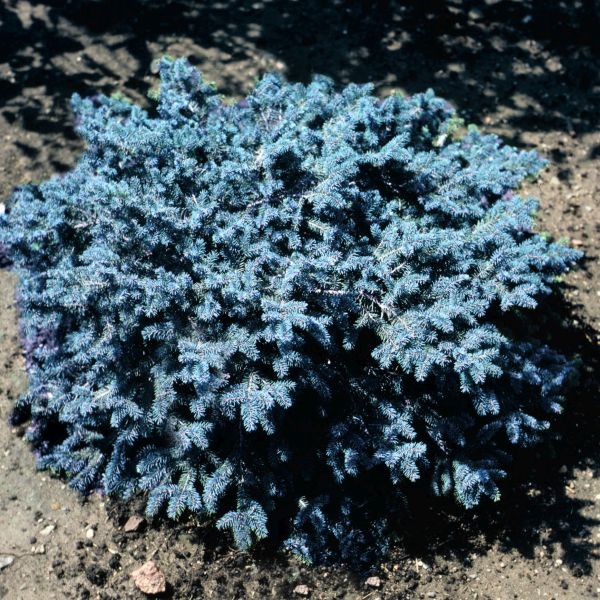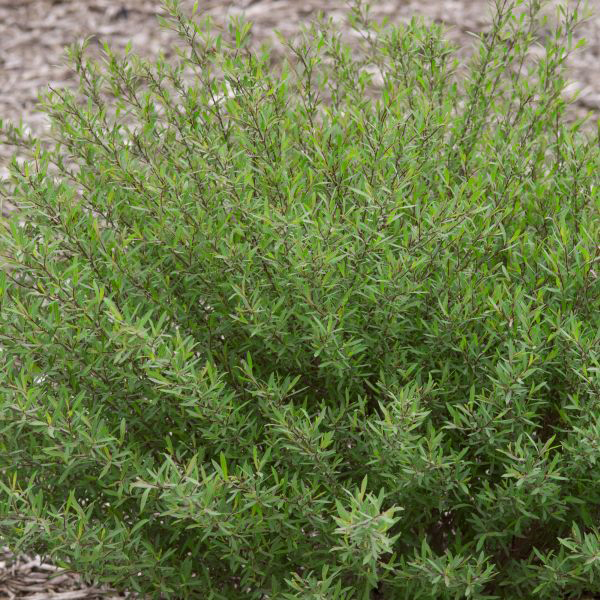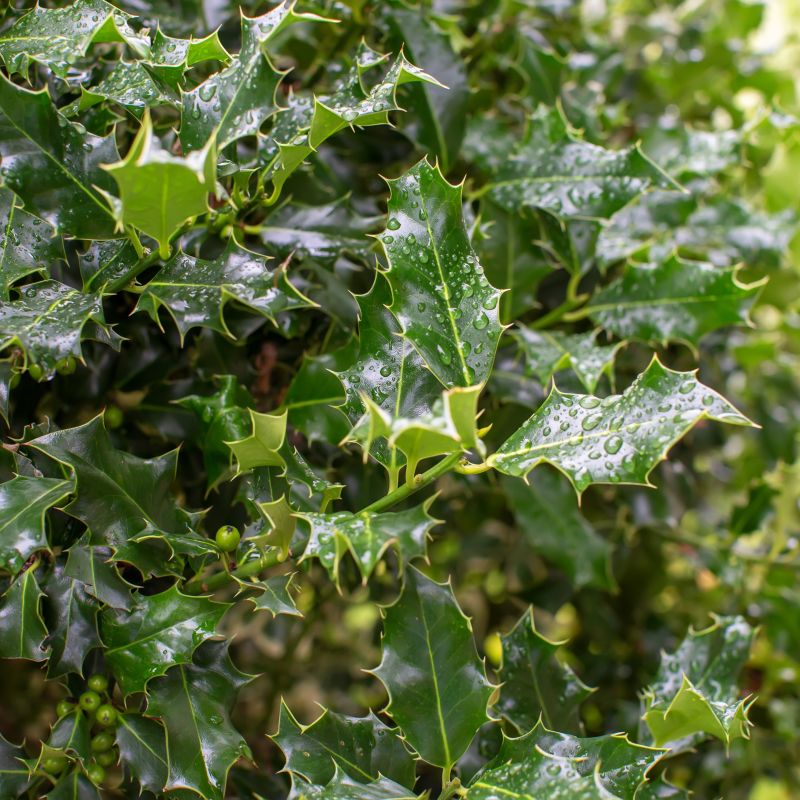

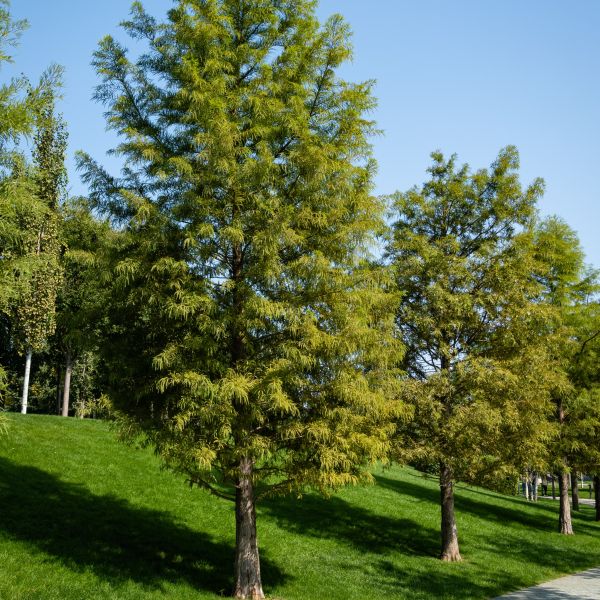
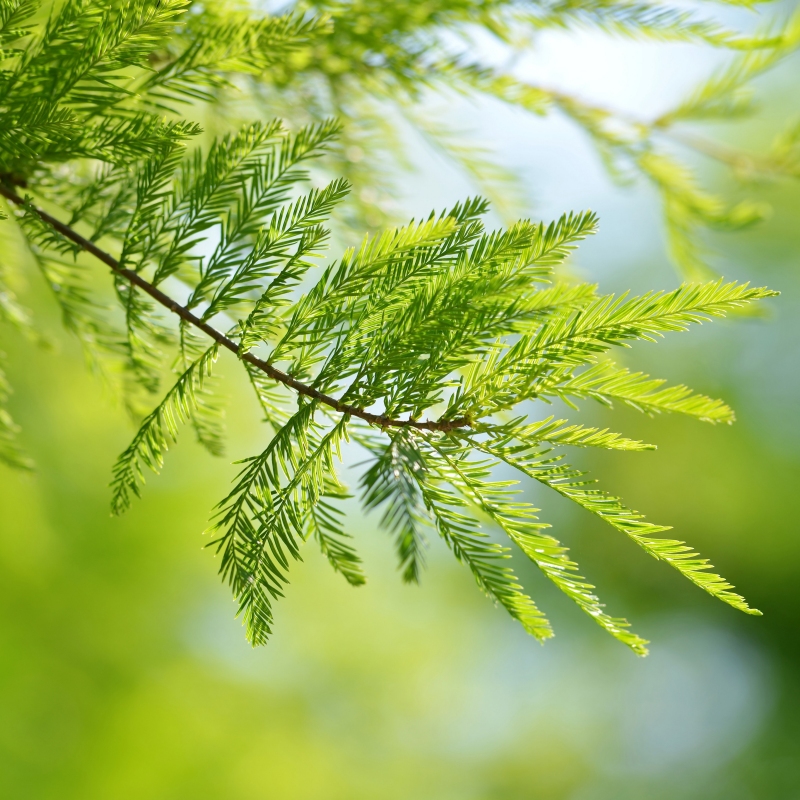
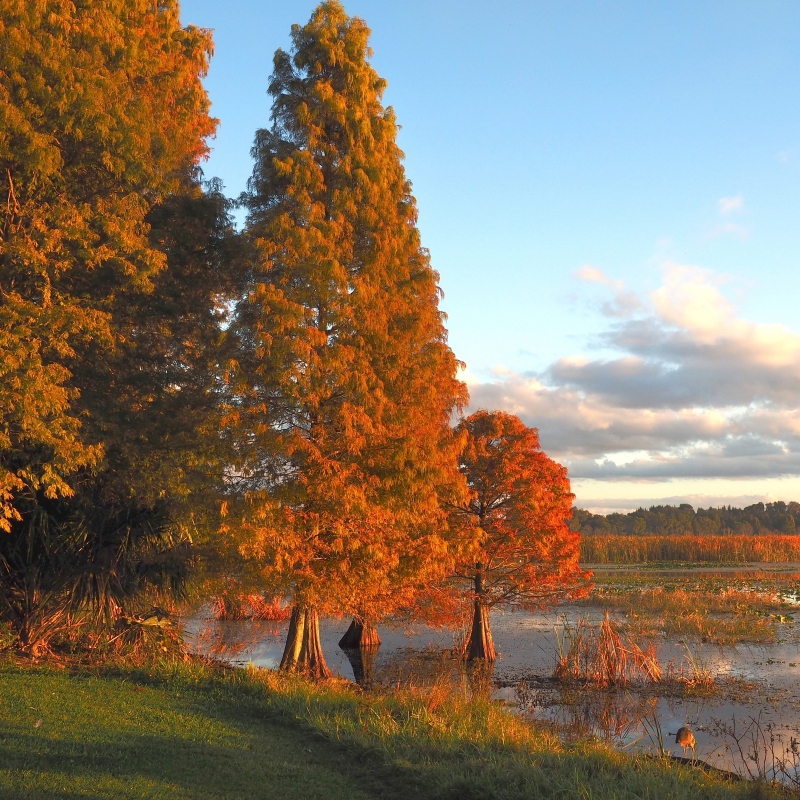

Bald Cypress Tree
Taxodium distichum
84 reviews
Bald Cypress Tree
Taxodium distichum
84 reviews
- Trade 3 Gallon
We are sorry, product is currently out of stock due to seasonal availability. Please check the "Related plants available in your area" section below
Not just beautiful - intentionally selected by ShrubHub's 3D landscape design team to fit real-world spaces and maximize yard potential.
Why Bald Cypress Tree?
The Bald Cypress tree is a species of tree that grows well in wet and swampy environments. It has a unique feature of growing "knees" or pneumatophores above its roots to help with respiration in waterlogged soils. These trees can live for over 1,000 years and are used for lumber, furniture, and ornamental purposes. Additionally, the Bald Cypress is a popular tree for landscaping due to its beautiful fall color display.
Related plants available in your area
Sunlight
Bald Cypress trees require full sunlight to thrive. They prefer open areas with direct sunlight exposure, as it promotes healthy growth and development.
Watering
Bald Cypress trees have a moderate watering requirement and prefer consistently moist soil. They can tolerate short periods of drought, but regular watering is necessary during dry spells to maintain optimal growth and health.
Fertilizing
Bald Cypress trees require a balanced fertilizer with a ratio of nitrogen, phosphorus, and potassium (NPK) of approximately 10-10-10. It is best to apply the fertilizer during the spring and early summer to support healthy growth.
Native to the swampy areas of southern North America, the bald cypress tree (also known as swamp cypress, tidewater red cypress, gulf cypress, and white cypress) is an extremely unique slow-growing deciduous conifer that boasts majestic greatness.
This cone-bearing tree looks like it is reaching for the sky as it grows up to 50 to 70 feet tall and 20 to 30 feet wide.
It is adorned with feathery, horizontal branches (often draped with Spanish moss), needle-like leaves, and reddish-brown bark that later turns into ashy gray, bald cypress trees never fail to add glory to any outdoor space. Bonus, this plant puts on a fantastic show in the fall, displaying outstanding foliage and painting landscapes with vivid reds, fiery oranges, and shimmering golds.
This low-maintenance, hardy tree thrives in areas that receive full sun to partial shade, grows best in swampy soils (yet adapts to dry ones), reaches up to 600 years of age, and preserves natural habitats for wildlife as its triangular seeds are attractive to wood ducks, wild turkey, water birds, and squirrels.
If there’s a strikingly beautiful tree that doubles as an architectural focal point, the bald cypress is the one. With its pyramidal shape, mighty figure, and exciting characteristics, this plant is a clever way to steal visitors' attention once they enter your yard.
If you are wondering why you should plant this staple of southern swamps in your yard or driveway, think of its deep, leafy shade that provides your property with complete privacy and keeps your garden cool during scorching hot summer days. Plus, bald cypress prevents erosion, improves air quality, and is used to make boats, fences, and cabinets.
Add visual interest, depth, and texture to your yard with one click! Order yours now!
Plant Information:
| Botanical Name: | Taxodium distichum |
| USDA Zones: | 4 - 10 |
| Water: | Moderate to Wet |
| Exposure: | Full Sun |
| Soil Needs: | Widely Adaptable |
| Mature Height: | 50 - 65 feet |
| Mature Spread: | 20 - 30 feet |








Pollination Info
Pollination Information for Bald Cypress Tree
Bald cypress trees are typically pollinated by wind. They produce separate male and female flowers on the same tree. The male flowers release pollen, which is carried by the wind to the female flowers for fertilization.
Male flowers are generally small and located on short stalks. They tend to grow in clusters and can be seen as small, brown structures on the tree's branches. The female flowers are larger and located on longer stalks. Once pollinated, they develop into cones that hold the tree's seeds.
Bald cypress trees also attract a variety of insects, such as bees and butterflies, to their blooms. These insects may aid in pollination, but wind pollination remains the predominant method for this species.
Overall, the bald cypress tree is a hardy and resilient plant that has evolved to thrive in its natural habitat. Its unique pollination methods are just one of the fascinating aspects of this tree.
FAQ
Bald Cypress Tree FAQ
What is a Bald Cypress Tree?
A Bald Cypress Tree (Taxodium distichum) is a deciduous conifer tree that is native to the southeastern United States. It is known for its unique growth form, which includes a period of dormancy during winter months and the shedding of its leaves each fall.
How tall does a Bald Cypress Tree grow?
Bald Cypress Trees commonly grow up to 100-120 feet tall, although some have been documented to reach heights of over 160 feet.
What is the life expectancy of a Bald Cypress Tree?
Bald Cypress Trees can live for several hundred years if they are planted in good growing conditions and receive proper maintenance.
What is the growth rate of a Bald Cypress Tree?
Bald Cypress Trees typically have a moderate growth rate of around 1-2 feet per year, although this can vary depending on growing conditions such as soil type, sunlight exposure, and climate.
What are the growing conditions for a Bald Cypress Tree?
Bald Cypress Trees thrive in wet and swampy environments, although they can also grow in drier soil types. They prefer full sun exposure but can tolerate partial shade. They are tolerant of a wide range of soil types but prefer moist, acidic soils.
How do you care for a Bald Cypress Tree?
Bald Cypress Trees require very little maintenance once established. They should be watered regularly during the first year of planting to ensure adequate root growth and establishment. Fertilizer is not usually necessary, although light applications of nitrogen may be beneficial. Pruning is generally only needed to remove dead or damaged branches.
Are there any pests or diseases that commonly affect Bald Cypress Trees?
Common pests and diseases that affect Bald Cypress Trees include aphids, bagworms, and spider mites. Fungal diseases such as root rot and canker can also be a problem, particularly in wet soil conditions. Proper care and maintenance can help prevent these issues.
Planting & Care
Planting & Care for Bald Cypress Tree
Planting
Bald cypress trees are best planted in the spring or fall, which allows enough time for the roots to become established before hot or cold weather sets in. When choosing a planting site, be sure to select a location that receives full sun to partial shade and has well-draining soil, as the tree is susceptible to root rot in poorly-drained soils.
Dig a hole that’s two or three times the width of the root ball and slightly shallower than the root ball’s depth. Gently loosen the roots and place the tree in the hole so that the top of the root ball is level with or slightly above the surrounding soil. Backfill the hole with soil and water the tree deeply.
Watering
Bald cypress trees prefer moist soil but can tolerate short periods of drought. Water the tree deeply once a week during dry periods, providing enough water to reach the root zone. As the tree matures, its tolerance for drought increases.
Fertilizing
Bald cypress trees benefit from annual fertilization in the early spring, using a slow-release fertilizer. Avoid fertilizing near the end of the growing season, as this can encourage new growth that may not have time to harden off before winter.
Pruning
Bald cypress trees rarely require pruning, but should be pruned to remove any damaged or diseased branches. Prune in late winter or early spring, before new growth appears.
Pest & Disease Control
Bald cypress trees are relatively resistant to pests and diseases. However, they are susceptible to fungal diseases, such as cankers and root rot, if grown in poorly-drained soil. To prevent fungal diseases, plant bald cypress trees in well-draining soil and avoid overwatering.
Winter Care
In areas with harsh winters, cover the tree’s base with a layer of mulch to protect the roots from freezing. The tree’s foliage naturally turns brown and drops in the fall, but this is not a cause for concern, as the tree is deciduous.
Check Out These Verified Customer Reviews:
Customer Reviews
4.7 out of 5 based on 84 reviews
Thank you! Your review has been submitted.
Very happy with my purchase of the Bald Cypress Tree. It added a beautiful touch to my garden. Fast shipping and well-packed.
I recently purchased a beautiful Bald Cypress Tree from this website and I couldn't be happier with my purchase. The tree arrived in perfect condition and was even more striking in person. The customer service was excellent and the shipping was quick and efficient. I highly recommend this tree to anyone looking to add a unique and elegant touch to their garden.
I purchased a Bald Cypress Tree from this website and was very pleased with the overall quality of the item. The tree was healthy and well-maintained, and it added a lovely touch to my outdoor space. The website experience was smooth and easy to navigate, and the shipping was prompt. I would definitely consider purchasing from this site again in the future.
Item has been added to your cart.



